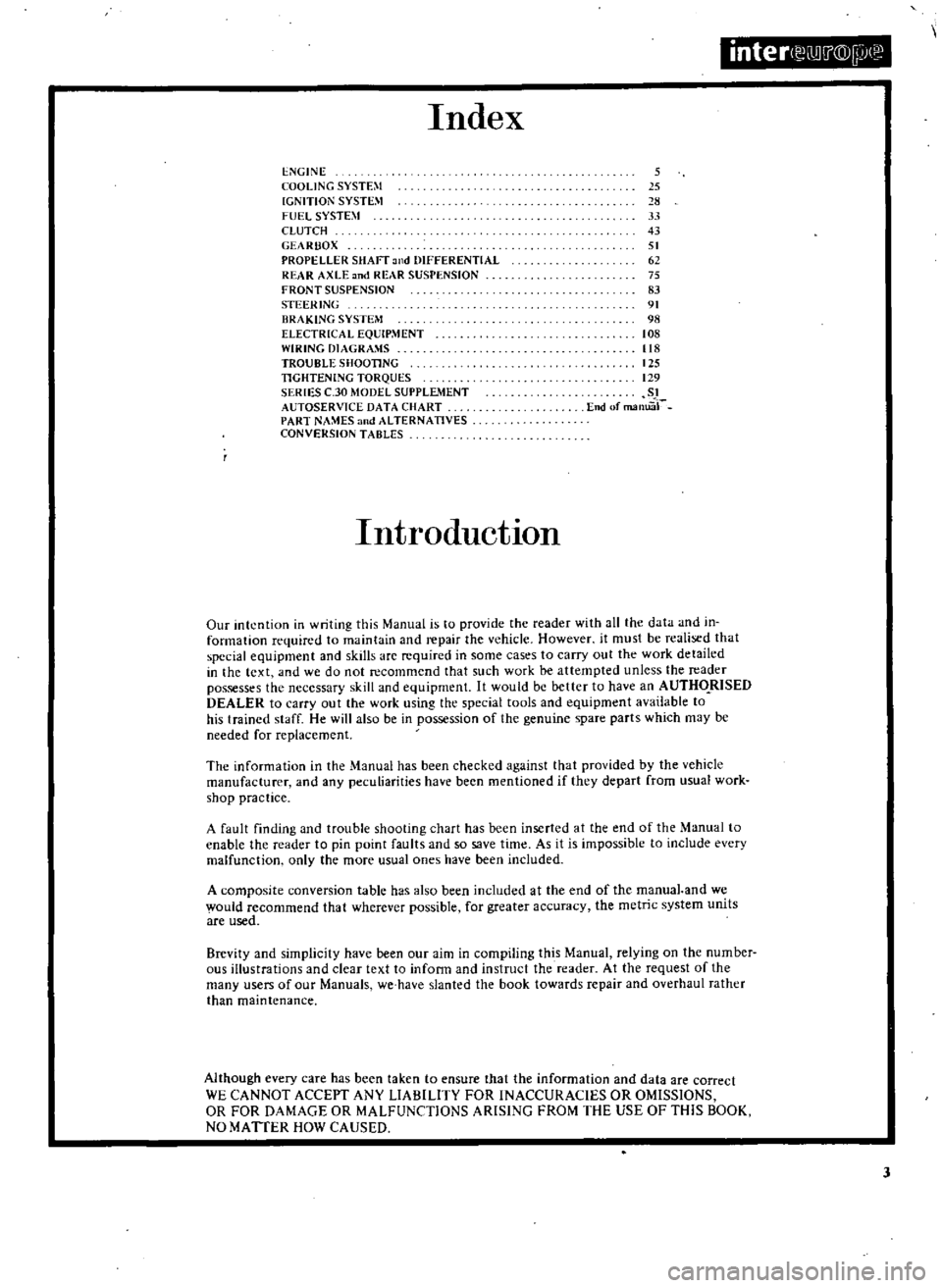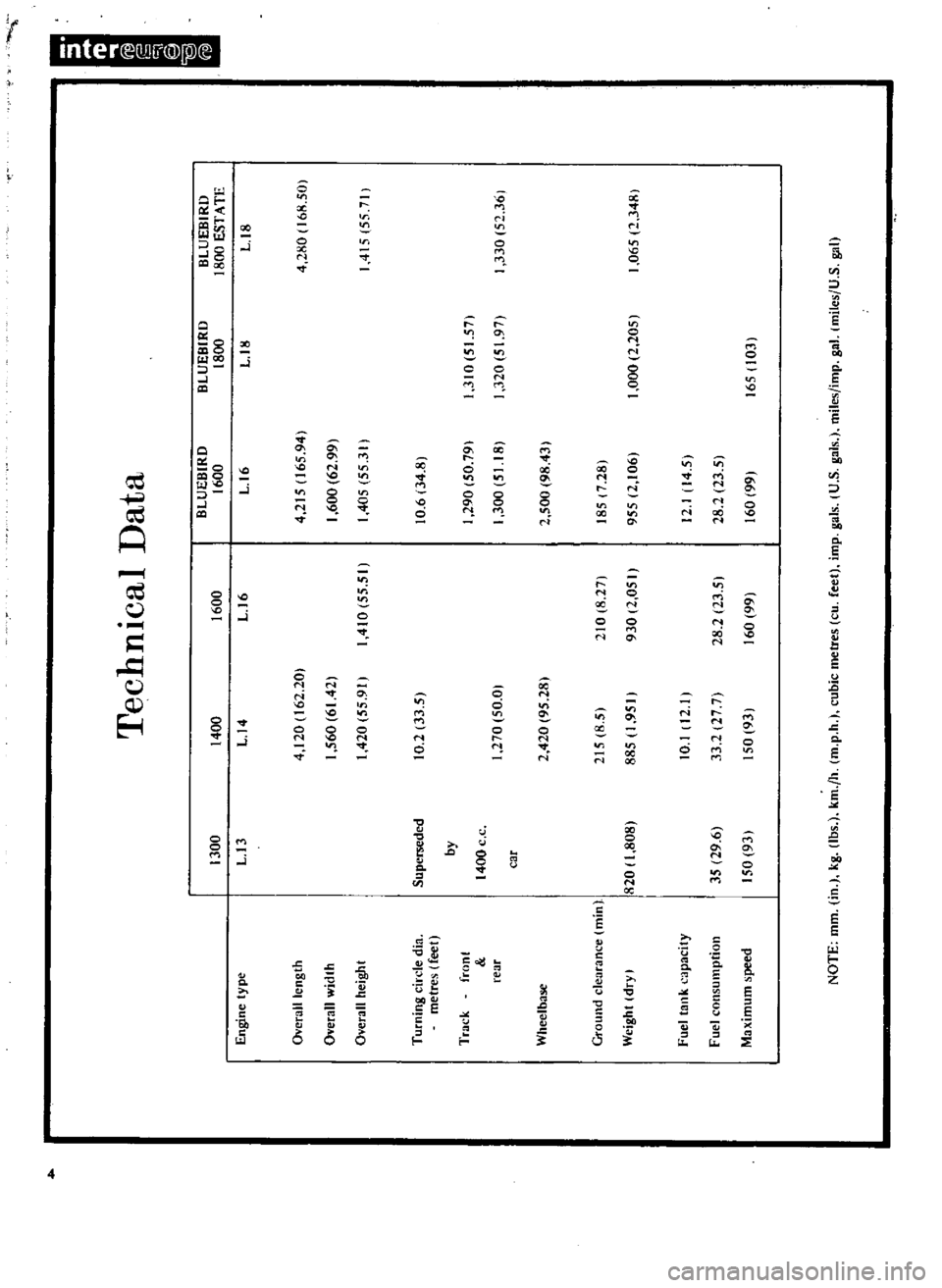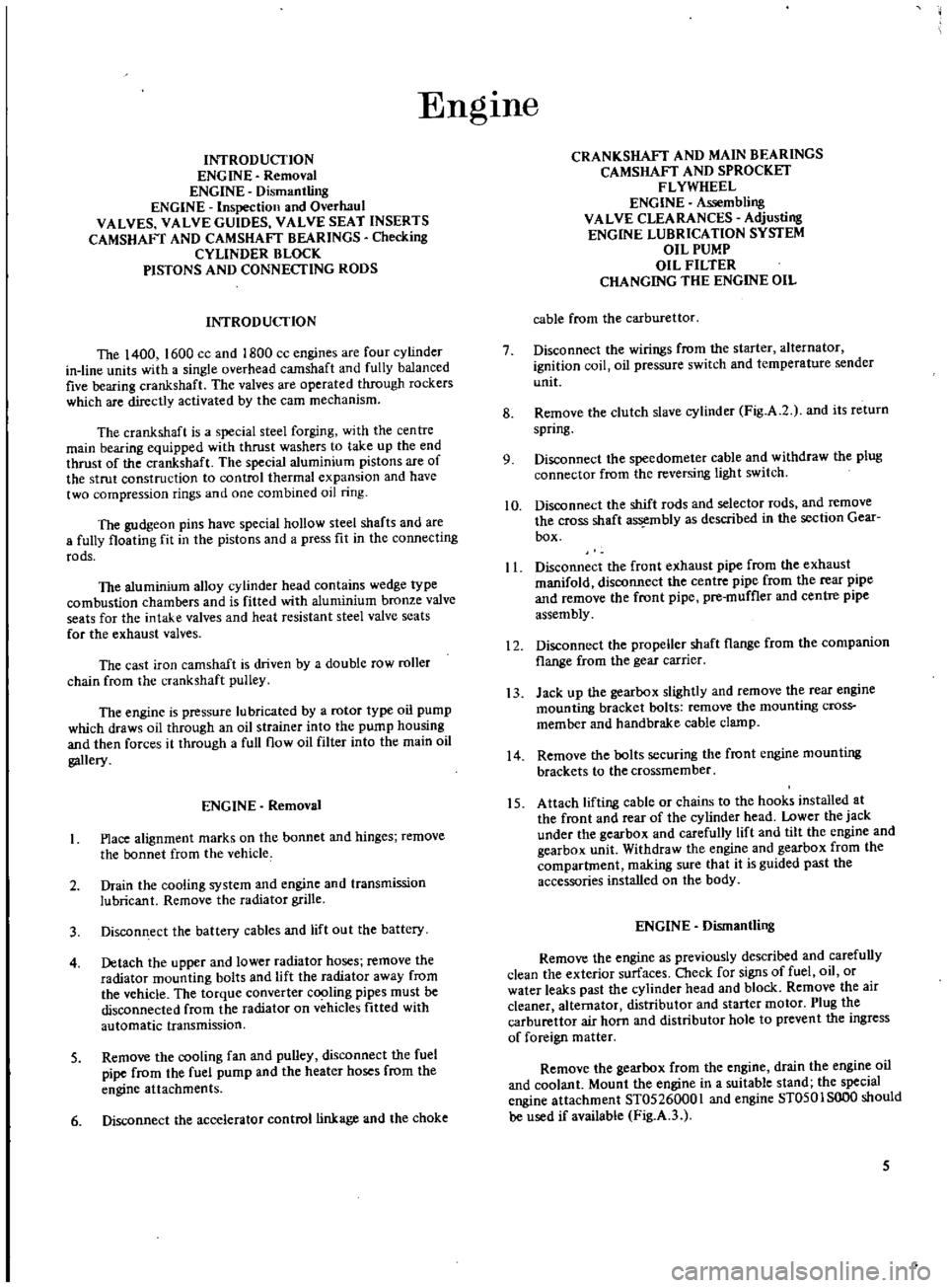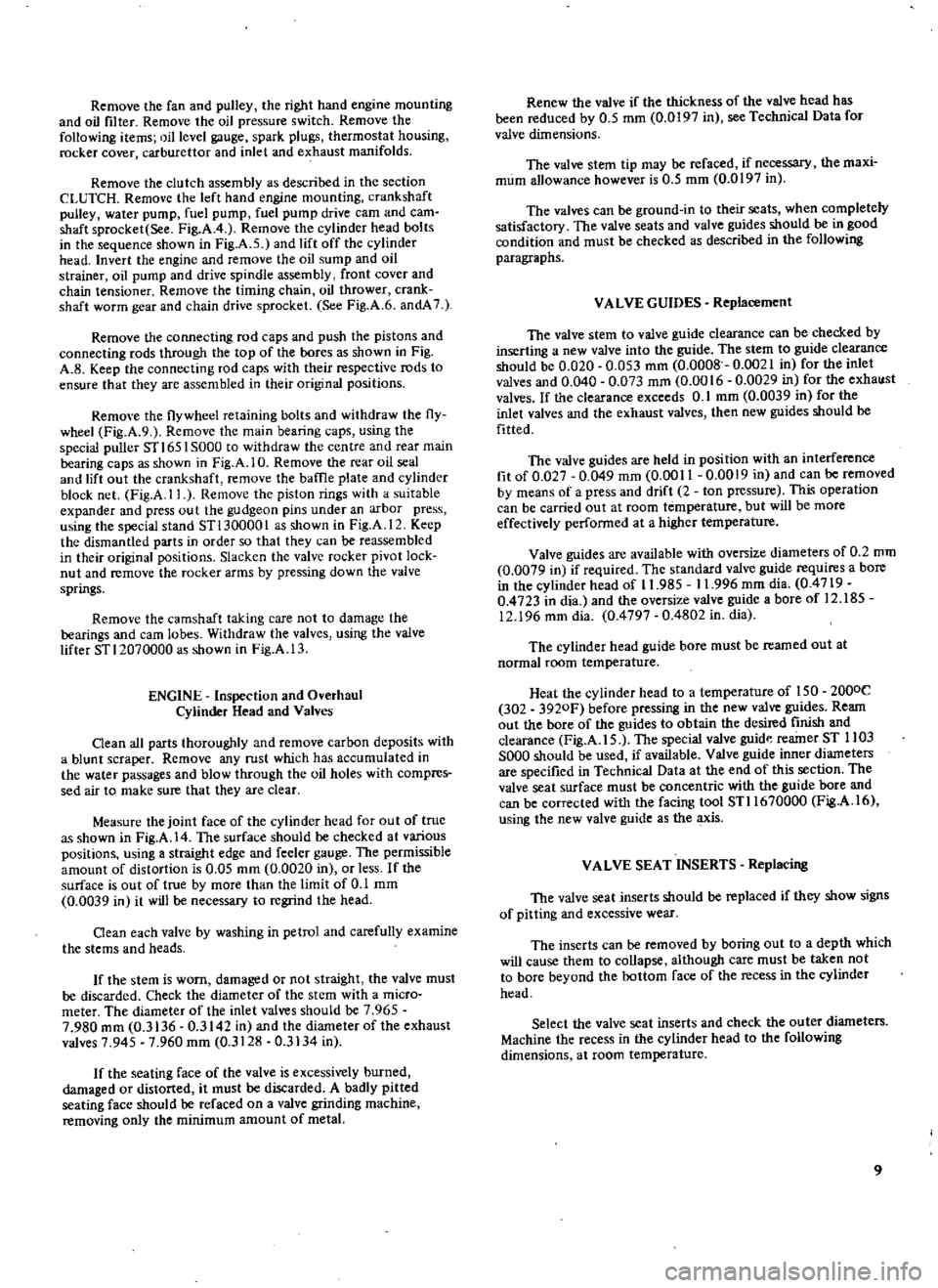DATSUN 610 1969 Workshop Manual
Manufacturer: DATSUN, Model Year: 1969, Model line: 610, Model: DATSUN 610 1969Pages: 171, PDF Size: 10.63 MB
Page 1 of 171

Page 2 of 171

i
WORKSHOP
MANUAL
for
510
series
DATSUN
130014001600
610
series
I
l
A
160B
180B
COMPILED
AND
WRlTTEN
av
C
R
Newton
SBN
901610
13
5
PUBUSHED
BY
OOEREUROPE
AUTODA
T
A
DIVISION
NICHOLSON
HOUSE
MAIDENHEAD
BERKSHIRE
ENGLAND
C
Copyrirt
lnt
eurupe
Cktoblr
1972
WSM
137
Printed
Engl
w
Page 3 of 171

i
I
inter
llil
j
@
W
E
Hu
tol
and
Type
Identl
ficatlOn
YOUR
MANUFACTURER
The
Nissan
Motor
Company
was
founded
in
1933
under
the
name
of
Jidosha
Seizo
Co
Ltd
In
1934
the
present
title
was
adopted
and
during
1966
the
company
merged
with
Prin
c
Motors
builders
of
the
Skyline
and
Gloria
ars
With
the
head
office
and
six
main
factories
near
Tokyo
Japan
other
sister
plants
ace
also
in
production
in
various
countries
throughout
the
world
YOUR
VEHICLE
In
the
early
days
of
the
company
s
history
vehicles
constructed
were
given
the
trade
name
DA
TSDN
which
means
SON
of
DAT
the
initials
of
three
of
the
financial
backers
forming
the
syllable
DA
T
To
avoid
confusion
with
a
similar
Japanese
word
the
name
was
eventually
changed
to
DATSUN
The
various
models
covered
in
this
Manual
together
with
alternative
namt
s
used
for
the
world
markets
are
listed
below
MODELS
COVERED
MODEL
ALTERNATIVE
IDENT
510
SERIES
Datsun
1300
510
SERIES
Datsun
1400
510
SERIES
Datsun
1600
610
SERIES
Bluebird
160
B
610
SERIES
Bluebird
180
B
00
SERIES
DATSUN
ISoo
ENGINE
FITTED
1300
c
c
L
l3
1400
c
LI4
1600
c
c
LI6
1600
c
LI6
1800
c
c
L
18
181S
GIS
WUUUU
I
fl
I
lfI
r
7
I
i
I
1
11
lii
Identification
plate
location
Engine
serial
and
model
number
2
REMARKS
Superseded
by
1400
c
c
model
with
L
14
engine
Similar
to
1300
c
c
car
Similar
to
1300
1400
e
c
car
In
some
markets
identified
as
1600
SSS
1800
SSS
J
S
1
HI
I
Car
serial
number
location
Page 4 of 171

inteN
j
@IP
B
Index
ENGINE
COOLING
SYSTE
l
IGNITION
SYSTE
I
FUEL
SYSTBl
CLUTCH
GEARUOX
PROPELLER
SHAFT
Id
DIFFERENTIAL
REAR
AXLE
nd
REAR
SUSPENSION
FRONT
SUSPENSION
STEERING
BRAKING
SYSTEM
ELECTRICAL
EQUIP
JENT
WIRING
JAGRA
IS
TROUBLE
SHOOTING
TIGHTENING
TORQUES
SERIES
C
30
MODEL
SUPPLEMENT
AUTOSERVlCE
DATA
CHART
PART
NA
ES
nd
ALTERNATIVES
CONVERSION
TABLES
S
15
2S
33
43
51
62
7S
83
91
9S
lOB
liB
I2S
129
51
End
of
manuir
IntroductIon
OUf
intention
in
writing
this
Manual
is
to
provide
the
reader
with
all
the
data
and
in
formation
required
to
maintain
and
repair
the
vehicle
However
it
must
be
realised
that
special
equipment
and
skills
arc
required
in
some
caseS
to
carry
out
the
work
detailed
in
the
text
and
we
do
not
recommend
that
such
work
be
attempted
unless
the
reader
possesses
the
necessary
skill
and
equipment
It
would
be
better
to
have
an
AUTHQRISED
DEALER
to
carry
out
the
work
using
the
special
tools
and
equipment
available
to
his
trained
staff
He
will
also
be
in
possession
of
the
genuine
spare
parts
which
may
be
needed
for
replacement
The
information
in
the
Manual
has
been
checked
against
that
provided
by
the
vehicle
manufacturer
and
any
peculiarities
have
been
mentioned
if
they
depart
rom
usual
work
shop
practice
A
fault
finding
and
trouble
shooting
chart
has
been
inserted
at
the
end
of
the
Manual
to
enable
the
reader
to
pin
point
faults
and
so
save
time
As
it
is
impossible
to
include
every
malfunction
only
the
more
usual
ones
have
been
included
A
composite
conversion
table
has
also
been
included
at
the
end
of
the
manual
and
we
would
recommend
that
wherever
possible
for
greater
accuracy
the
metric
system
units
are
used
Brevity
and
simplicity
have
been
our
aim
in
compiling
this
Manual
relying
on
the
number
ous
illustrations
and
clear
text
to
inform
and
instruct
the
reader
At
the
request
of
the
many
users
of
our
Manuals
we
have
slanted
the
book
towards
repair
and
overhaul
rather
than
maintenance
Although
every
care
has
been
taken
to
ensure
that
the
information
and
data
are
correct
WE
CANNOT
ACCEPT
ANY
LIABILITY
FOR
INACCURACIES
OR
OMISSIONS
OR
FOR
DAMAGE
OR
MALFUNCTIONS
ARISING
FROM
THE
USE
OF
THIS
BOOK
NO
MATTER
HOW
CAUSED
I
3
Page 5 of 171

t
r
Engine
type
Ovendi
cngth
1300
L
13
Overall
width
Oyerall
height
Turning
circle
din
metres
tfeet
Supen
eded
by
Track
font
rear
1400
c
c
car
Ground
dearance
Olin
Weight
dry
I
820
808
I
Fuel
tClflk
capacity
35
29
6
150
93
Fuel
consumption
aximum
peed
Technical
Data
BLUEBIRD
400
1600
1600
U4
U6
0
4
120
162
20
1
560
6142
410
55
51
420
55
91
10
2
33
5
270
50
0
2
420
95
281
215
8
5
885
1
950
210
8
27
930
2
050
10
1
12
33
2
27
7
50
931
28
2123
5
60
99
L
16
4
215
165
941
1
600
62
99
405
55
3
Ii
0
6
34
8
290
50
79
1
300
51
18
2
500
98
43
185
7
281
955
2
1061
12
14
5
28
2
23
5
60
991
BLUEBIRD
1800
L
18
3
0
5
57
320
5
971
000
2
2051
165
103
BLUEBIRD
1800
ESTATE
U8
4
280
168
501
4
5
557
330
52
361
1
065
2
348
Page 6 of 171

EngIne
INTRODUCTION
ENGINE
Removal
ENGINE
DismantUng
ENGINE
Inspection
and
Overhaul
VALVES
VALVE
GUIDES
VALVE
SEAT
INSERTS
CAMSHAFT
AND
CAMSHAFT
BEARINGS
Checking
CYliNDER
BLOCK
PtSTONS
AND
CONNECTING
RODS
INTRODUCTION
The
1400
1600
cc
and
1800
cc
engines
are
four
cylinder
in
line
units
with
a
single
overhead
camshaft
and
fully
balanced
five
bearing
crankshaft
The
valves
are
operated
through
rockers
which
are
directly
activated
by
the
earn
mechanism
The
crankshaft
is
a
special
steel
forging
with
the
centre
main
bearing
equipped
with
thrust
washers
to
take
up
the
end
thrust
of
the
crankshaft
The
special
aluminium
pistons
are
of
the
strut
construction
to
control
thermal
expansion
and
have
two
compression
rings
and
one
combined
oil
ring
The
gudgeon
pins
have
special
hollow
steel
shafts
and
are
a
fully
floating
fit
in
the
pistons
and
a
press
fit
in
the
connecting
rods
The
aluminium
alloy
cylinder
head
contains
wedge
type
combustion
chambers
and
is
fitted
with
aluminium
bronze
valve
seats
for
the
intake
valves
and
heat
resistant
steel
valve
seats
for
the
exhaust
valves
The
cast
iron
camshaft
is
driven
by
a
double
row
roller
chain
from
the
crankshaft
pulley
The
engine
is
pressure
lubricated
by
a
rotor
type
oil
pump
which
draws
oil
through
an
oil
strainer
into
the
pump
housing
and
then
forces
it
through
a
full
flow
oil
filter
into
the
main
oil
gallery
ENGINE
Removal
Place
alignment
marks
on
the
bonnet
and
hinges
remove
the
bonnet
from
the
vehicle
2
Drain
the
cooling
system
and
engine
and
transmission
lubricant
Remove
the
radiator
grille
3
Discon
ect
the
battery
cables
and
lift
out
the
battery
4
Detach
the
upper
and
lower
radiator
hoses
remove
the
radiator
mounting
bolts
and
lift
the
radiator
away
from
the
vehicle
The
torque
converter
c
jng
pipes
must
be
disconnected
from
the
radiator
on
vehicles
fitted
with
automatic
transmission
S
Remove
the
COOling
fan
and
pulley
disconnect
the
fuel
pipe
from
the
fuel
pump
and
the
heater
hoses
from
the
engine
attachments
6
Disconnect
the
accelerator
control
linkage
and
the
choke
CRANKSHAFT
AND
MAIN
BEARINGS
CAMSHAFT
AND
SPROCKET
FLYWHEEL
ENGINE
Assembling
VALVE
CLEARANCES
Adjusting
ENGINE
LUBRICATION
SYSTEM
OIL
PUMP
OIL
FILTER
CHANGING
THE
ENGINE
OIL
cable
from
the
carburettor
7
Disconnect
the
wirings
from
the
starter
alternator
ignition
coil
oil
pressure
switch
and
temperature
sender
unit
8
Remove
the
clutch
slave
cylinder
Fig
A
2
and
its
return
spring
9
Disconnect
the
speedometer
cable
and
withdraw
the
plug
connector
from
the
reversing
light
switch
10
Disconnect
the
shift
rods
and
seJector
rods
and
remove
the
cross
shaft
assembly
as
described
in
the
section
Gear
box
II
Disconnect
the
front
exhaust
pipe
from
the
exhaust
manifold
disconnect
the
centre
pipe
from
the
rear
pipe
and
remove
the
front
pipe
pre
muffler
and
centre
pipe
assembly
12
Disconnect
the
propeUer
shaft
flange
from
the
companion
flange
from
the
gear
carrier
13
Jack
up
the
gearbox
slightly
and
remove
the
rear
engine
mounting
bracket
bolts
remove
the
mounting
cross
member
and
handbrake
cable
c1amp
14
Remove
the
bolts
securing
the
front
engine
mounting
brackets
to
the
crossmember
15
Attach
lifting
cable
or
chains
to
the
hooks
installed
at
the
front
and
rear
of
the
cylinder
head
Lower
the
jack
under
the
gearbox
and
carefully
lift
and
tilt
the
engine
and
gearbox
unit
Withdraw
the
engine
and
gearbox
from
the
compartment
making
sure
that
it
is
guided
past
the
accessories
installed
on
the
body
ENGINE
Dismantling
Remove
the
engine
as
previously
described
and
carefully
clean
the
exterior
surfaces
Cbeck
for
signs
of
fuel
oil
or
water
leaks
past
the
cylinder
head
and
block
Remove
the
air
cleaner
alternator
distributor
and
starter
motor
Plug
the
carburettor
air
horn
and
distributor
hole
to
prevent
the
ingress
of
foreign
matter
Remove
the
gearbox
from
the
engine
drain
the
engine
oil
and
coolant
Mount
the
engine
in
a
suitable
stand
the
special
engine
attachment
ST05260001
and
engine
ST0501SOO0
should
be
used
if
available
Fig
A
3
5
Page 7 of 171

engine
600
tb
tllroogh
Section
S
O
sef1
es
ofenll
A
o
ne
l
Right
S
0
61
ttor
bure
n
car
l
tWI
thS
hi
4
t
V
ne
of
engJ
vie
lJ
lt
side
Gene
ol
Engine
FIS
to
Page 8 of 171

fl
J
J
f
1
ST052fiOOOl
Fig
A
2
Removing
the
clutch
slave
cylinder
Fig
A
3
Mounting
the
engine
STI
0
120000
CI
@
j
91
7
m
I3L
I
T
IC
t
J
i1
C
J
6
i
11
j
1
j
4
I
U
O
J
I
Ll
LJJ
1r9i
V
@
1
EM092
Fig
AA
Removing
the
camshaft
sprocket
Fig
A
5
Cylinder
head
bolt
removal
sequence
t
J1
I
J
1
1
i
I
G
qt
7
r
J
O
I
IS
Fig
A
6
Removing
the
chain
tensioner
and
timing
chain
Fig
A
7
Removing
the
drive
sprocket
7
Page 9 of 171

inter
lliJ
j
@I
IJ
I
7
4
i
ll
W
f
l
rr
er
j
il
Fig
A
9
Removing
the
flywheel
Fig
A
S
Removing
the
pistons
and
connecting
rods
Fig
A
II
Removing
the
baffle
plate
and
net
c
1
1i
t1
I
c2
r
Id
f
tij
Fig
A
IO
Removing
the
Tear
main
bearing
cap
Fig
A
12
Removing
the
piston
pin
Fig
A
13
Removing
the
valves
Fig
A
l4
OIecking
the
cylinder
head
joinlface
Fig
A
I
5
Reaming
the
valve
guide
8
Page 10 of 171

Remove
the
fan
and
pulley
the
right
hand
engine
mounting
and
oil
filter
Remove
the
oil
pressure
switch
Remove
the
following
items
oil
level
gauge
spark
plugs
thermostat
housing
rocker
cover
carburettor
and
inlet
and
exhaust
manifolds
Remove
the
clutch
assembly
as
described
in
the
section
CLUTCH
Remove
the
left
hand
engine
mounting
crankshaft
pulley
water
pump
fuel
pump
fuel
pump
drive
earn
and
cam
shaft
sprocket
See
Fig
A
4
Remove
the
cylinder
head
bolts
in
the
sequence
shown
in
Fig
A
5
and
lift
off
the
cylinder
head
Invert
the
engine
and
remove
the
oil
sump
and
oil
strainer
oil
pump
and
drive
spindle
assembly
front
cover
and
chain
tensioner
Remove
the
timing
chain
oil
thrower
crank
shaft
worm
gear
and
chain
drive
sprocket
See
Fig
A
6
andA
7
Remove
the
connecting
rod
caps
and
push
the
pistons
and
connecting
rods
through
the
top
of
the
bores
as
shown
in
Fig
A
B
Keep
the
connecting
rod
caps
with
their
respective
rods
to
ensure
that
they
are
assembled
in
their
original
positions
Remove
the
flywheel
retaining
bolts
and
withdraw
the
fly
wheel
Fig
A
9
Remove
the
main
bearing
caps
using
the
special
puller
ST
1651
SOOO
to
withdraw
the
centre
and
rear
main
bearing
caps
as
shown
in
Fig
A
l
O
Remove
the
rear
oil
seal
and
lift
out
the
crankshaft
remove
the
baffie
plate
and
cylinder
block
net
Fig
A
II
Remove
the
piston
rings
with
a
suitable
expander
and
press
out
the
gudgeon
pins
under
an
arbor
press
using
the
special
stand
STl300001
as
shown
in
Fig
A
12
Keep
the
dismantled
parts
in
order
so
that
they
can
be
reassembled
in
their
original
positions
Slacken
the
valve
rocker
pivot
lock
nut
and
remove
the
rocker
arms
by
pressing
down
the
valve
springs
Remove
the
camshaft
taking
care
not
to
damage
the
bearings
and
earn
lobes
Withdraw
the
valves
using
the
valve
lifter
STl2070000
as
shown
in
Fig
A
13
ENGINE
Inspection
and
Overhaul
Cylinder
Head
and
Valves
Clean
all
parts
thoroughly
and
remove
carbon
deposits
with
a
blunt
scraper
Remove
any
rust
which
has
accumulated
in
the
water
passages
and
blow
through
the
oil
holes
with
compres
sed
air
to
make
sure
that
they
are
clear
Measure
the
joint
face
of
the
cylinder
head
for
out
of
true
as
shown
in
Fig
A
14
The
surface
should
be
checked
at
various
positions
using
a
straight
edge
and
feeler
gauge
The
permissible
amount
of
distortion
is
0
05
mm
0
0020
in
or
less
If
the
surface
is
out
of
true
by
more
than
the
limit
of
0
1
mm
0
0039
in
it
will
be
necessary
to
regrind
the
head
Clean
each
valve
by
washing
in
petrol
and
carefully
examine
the
stems
and
heads
If
the
stem
is
worn
damaged
or
not
straight
the
valve
must
be
discarded
Check
the
diameter
of
the
stem
with
a
micro
meter
The
diameter
of
the
inlet
valves
should
be
7
965
7
980
mm
0
3136
0
3142
in
and
the
diameter
of
the
exhaust
valves
7
945
7
960
mm
0
3128
0
3134
in
If
the
seating
face
of
the
valve
is
excessively
burned
damaged
or
distorted
it
must
be
discarded
A
badly
pitted
seating
face
should
be
refaced
on
a
valve
grinding
machine
removing
only
the
minimum
amount
of
metal
Renew
the
valve
if
the
thickness
of
the
valve
head
has
been
reduced
by
0
5
mm
0
0197
in
see
Technical
Data
for
valve
dimensions
The
valve
stem
tip
may
be
refaced
if
necessary
the
maxi
mum
allowance
however
is
0
5
mm
0
0197
in
The
valves
can
be
ground
in
to
their
seats
when
completely
satisfactory
The
valve
seats
and
valve
guides
should
be
in
good
condition
and
must
be
checked
as
described
in
the
following
paragraphs
VALVE
GUIDES
Replacement
The
valve
stem
to
valve
guide
clearance
can
be
checked
by
inserting
a
new
valve
into
the
guide
The
stem
to
guide
clearance
should
be
0
020
0
053
mm
0
0008
0
0021
in
for
the
inlet
valves
and
0
040
0
073
mm
0
0016
0
0029
in
for
the
exhaust
valves
If
the
clearance
exceeds
0
1
mm
0
0039
in
for
the
inlet
valves
and
the
exhaust
valves
then
new
guides
should
be
fitted
The
valve
guides
are
held
in
position
with
an
interference
fit
of
0
027
0
049
mm
0
0011
0
0019
in
and
can
be
removed
by
means
of
a
press
and
drift
2
ton
pressure
This
operation
can
be
carried
out
at
room
temperature
but
will
be
more
effectively
performed
at
a
higher
temperature
Valve
guides
are
available
with
oversize
diameters
of
0
2
mm
0
0079
in
if
required
The
standard
valve
guide
requires
a
bore
in
the
cylinder
head
of
11
985
11
996
mm
dia
0
4719
0
4723
in
dia
and
the
oversize
valve
guide
a
bore
of
12
185
12
196
mm
dia
0
4797
0
4802
in
dial
The
cylinder
head
guide
bore
must
be
reamed
out
at
normal
room
temperature
Heat
the
cylinder
head
to
a
temperature
of
150
2000e
302
3920F
before
pressing
in
the
new
valve
guides
Ream
out
the
bore
of
the
guides
to
obtain
the
desired
fInish
and
clearance
Fig
A
IS
The
special
valve
guid
reamer
ST
1103
SOOO
should
be
used
if
available
Valve
guide
inner
diameters
are
specified
in
Technical
Data
at
the
end
of
this
section
The
valve
seat
surface
must
be
concentric
with
the
guide
bore
and
can
be
corrected
with
the
facing
tool
STll670000
Fig
A
16
using
the
new
valve
guide
as
the
axis
VALVE
SEAT
INSERTS
Replacing
The
valve
seat
inserts
should
be
replaced
if
they
show
signs
of
pitting
and
excessive
wear
The
inserts
can
be
removed
by
boring
out
to
a
depth
which
will
cause
them
to
collapse
although
care
must
be
taken
not
to
bore
beyond
the
bottom
face
of
the
recess
in
the
cylinder
head
Select
the
valve
seat
inserts
and
check
the
outer
diameters
Machine
the
recess
in
the
cylinder
head
to
the
following
dimensions
at
room
temperature
9